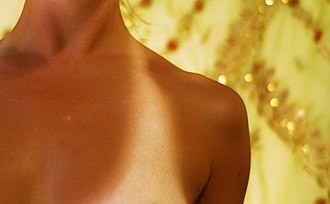What Is Sun Blocking Clothing? Sun blocking clothing is the first and most obvious thing you can do to protect your skin from the sun’s burning rays.

What Is Sun Blocking Clothing? Sun blocking clothing is simply clothing that keeps the sun off you! From head to toe, it is important to protect your skin.
Hats to protect your head and face, ears, and neck. You already know these are the first areas to sunburn when not covered. People knew covering up was important and keeping the sun off your body was important.
There are many kinds and styles of hats to help you protect your skin. These hats of past generations fill the bill for protecting your skin from the sun. However, I doubt they were easy to wear in hot weather.
When you are going to be in the sun, something is better than nothing. Information about skin cancer
Hats were more commonplace in earlier years than they have been in the last 70 or so years. We must get back to protecting our skin when we are in the sun. The numbers aren’t moving in the right direction for skin cancer.
Layers of clothing will help protect you.
When deciding what to use from your closet, look for a tightly woven fabric. Denim is good, as well as cotton-polyester blends. There are many stretch fabrics as well. Just make sure you can’t see through it.
We have long thought that sunscreens are the best and the first protection you have for your skin to slow down early wrinkling.
Sunscreens do have their place in our efforts to protect our skin from too much sun. Your sun hat is the first part of a sun blocking wardrobe you should consider. Your hat, then your sunglasses. Sunscreen on your face to help slow down damage from reflections.
However, covering up from the sun is the best first move. Make sure to grab a long sleeve, loose-fitting shirt before heading out into the sun to work or play for any length of time.
There is no hard and fast rule for how long you would be safe to be out before covering up, even though you have sunscreen applied.
Our Dertimalogist says that 15 minutes tops! Then head for the shade, sunscreen, and sun blocking clothing. Don’t forget your sunglasses.
However, when we mentioned the thinning ozone layer, he agreed that 10 minutes would be more accurate in our present thinning ozone situation.

Tan Skin Lovers
That safe sun exposure period is short. I know, you’re willing to chance skin damage to have fun in the sun. In our family, we are already paying the price for this.
Realizing how many times we had not been wise with our sun protection for our skin is what created the need for Sun Blocking Clothing.com. We had to learn to do better.
Avoiding skin damage from the sun is the best way to avoid skin cancer.
If we are going to need to wear clothing to protect ourselves, in the central part of Texas where we live, it needs to breathe and be lightweight.
When you look good you feel better about wearing protective clothing. And to make a change from the careless lifestyle.
Learn to be careful with your own and your family’s skin. When I know one of my kids has a new cancer spot removed, I feel so guilty. I just didn’t know how dangerous it was for them to be in the sun so much.
Having the sun’s rays blocked from your skin by sun-blocking clothing is important for keeping the skin from being damaged, and from aging you.
Using Clothing to Block The Sun’s Damaging Rays
Let’s talk about the sun’s rays as you are becoming aware of the need for protection from the sun.
Electromagnetic radiation that is mainly from the sun is called UV Radiation. That is the dangerous stuff! Ultra Violent Rays can damage your skin in a hurry.
How UV Rays Affect our Skin
UVA rays: are the weakest, of these damaging rays. However, they are not safe. These rays cause skin cells to age faster. Aged skin is not as healthy as normal skin.
UVB rays: are stronger, and they can cause your skin to sunburn and begin to make your skin unable to heal and remain healthy. These rays will weaken your skin.
Soon, with repeated exposure, you will have conditions that allow skin cancer to grow.
Remember that if you are getting the UVB rays, the UVA rays are there as well. If your skin is feeling hot, those UVA rays are aging your skin too.
UVC rays: react with the ozone and don’t reach your skin, unless they are from man-made sources.
UV sanitizing blubs to kill bacteria, mercury lamps, and welding torches are examples of man-made UV rays or UVC.
The Main Source of our UV Radiation is Sunlight.
With the stronger sunlight between 10 AM and 4 PM, this is usually the source of most skin issues.
Wearing your sunscreen and sunglasses, and sun blocking clothing you can start protecting your skin if you have to be out in the more direct sun.
Adding a sun blocking hat and staying in the shade are effective ways to keep your skin safer.
Scheduling events early in the morning before 10 AM and after 4 PM is an effective skin-saving move.
By timing outside events to safer times, covering up with sunglasses, and sun blocking clothing including a sun hat, you can have safe fun in the sun.
Skin Cancers
Basal Carcinoma and Squamous Cell Carcinoma are the more common skin cancers. You will hear your dermatologist and his staff using those words to describe a condition relating to you!
When you are not being careful and are getting too much sun, you are putting yourself in harm’s way. These skin cancers can be removed.
Recovery is pretty quick and only leaves scars.
Melanoma is also a form of skin cancer. It shows up in tumors. They are often more difficult to remove and treat.
Merkel Cell Carinoma is a less common type of cancer of the skin.
You are also subject to cancer on your lips and eyes. Skin cancer can be easy to treat if caught early.
Is It Easier To Avoid The Sun Altogether?
With all the warnings, one might think that it is easier to just avoid the sun altogether. However, we need the vitamin D that sunlight promotes in our skin.
We know that we need this sunlight on our skin to make it produce the vitamin D we need. How can you get enough sun on your skin without it being too much?
As we are all individuals and have individual skin tones, the science community is exercising a very cautious estimate. They recommend only about 15 to 20 minutes in the sun, before 10 AM as safe.
If you are having a cup of coffee while sitting in the sun and notice that after 10 minutes you are getting flushed in your cheeks, that is enough for right now.
As different conditions affect our sun reactions you may react differently from one day to the next. The key is awareness. Watch how your skin reacts, and stay safe.
There is no magic number to expose your skin to the sun. So do so in small watchful spans of time. Watch the time of day as well. Before 10 AM and after 4 PM.
We do need to feel the sun on us, our faces, our arms. It does feel good. The vitamin D produced can be a mood enhancer, as well as make those with depression feel better.
The key is careful and mindful exposure.
I understand that most of us want a cut-and-dried number of minutes, to know when we had had enough. That’s what I wanted. What I realize now is that we have to be personal responsibility!
Sun Blocking Clothing
As we learn more about Sun Blocking Clothing it seems that it should be a great tool to keep your family safe from too much sun.
Having some sort of physical garment between your skin and the sun is how we can stay safe outside in the sun. Help you avoid skin cancer.
Grabbing a darker-colored tee shirt to wear instead of the old white one that has been washed so much. The thicker fabric is better than thinner.
Tighter woven is also better.
However, fitting tighter can be challenging. If the fabric stretches, often the sun can penetrate the weave holes, exposing your skin to sun damage.
A loose-fitting long sleeve tight woven fabric will do a better job of keeping you safe in the sun.
Your sun hat, sunglasses, loose-fitting long-sleeve shirt as well as your sunscreen will help your skin stay safe from overexposure.
These are no longer things that might work. They have been proven and do work when used together.
Any clothing that is on your body will help protect you from the sun. If you haven’t yet invested in a specially made sun blocking wardrobe, wear what you have. It is better than nothing at all.
Rated UPF Clothing
Manufacturers are developing new fabrics that are specially treated to block the sun from our bodies. They are lightweight, easy to wear and care for, and overall a very good investment.
There are standards that clothing labeled with the UPF rating must meet. This rating can give some assurance to the quality of the sun protection you should receive when wearing the garment.
However, until you have had time to get your wardrobe together, wear what you have in the closet. Don’t ignore the protection that is there. All you have to do is wear it.
Light Weight, Looser Fit
Especially important when selecting clothing from your closet to protect you from the sun. Loose-fitting is important to allow some airflow around your body. Long sleeves protect your arms as well.
Lighter colors reflect the sun’s rays better than darker items. However, stop and think about it. A lot of the reflection can hit your face from your shirt. Do you really want all the UVA on your face?
So as you are pondering all the sides to the question, specially made UPF clothing can be a better answer, once you get a sun-blocking shirt. For now, your white shirt may have to do the job. Remember to limit your exposure.
Sami’s Take On What Is Sun Blocking Clothing?
With my family’s history of skin cancers, sun blocking clothing sounds like what we need to stay safe from the sun.
However, past events show that we change slowly. We will have to form new habits and shop for some new clothing.
As we are not a patient lot, so there will be another lesson or two to learn before we have our skin exposure program fully remodeled.
While we are learning, and trying to change.
I don’t think we are that abnormal or self-destructive. It is just a matter of figuring out what works and what doesn’t.
With awareness, I think we will take better care of our skin.
How about you? What do you need to change?